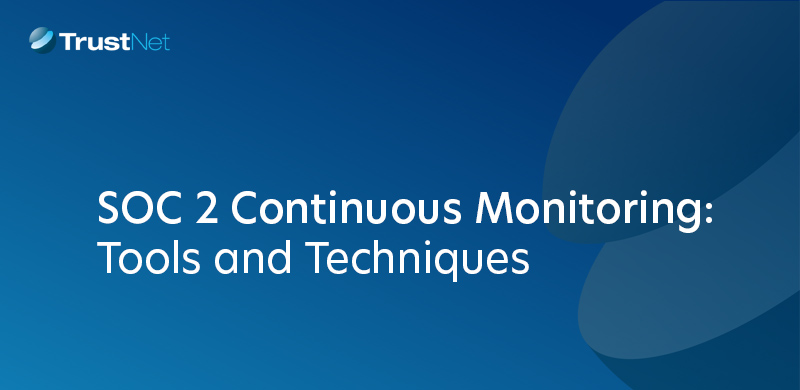Blog Mastering HIPAA Compliance: A Comprehensive Guide
Mastering HIPAA Compliance: A Comprehensive Guide

The Health Insurance Portability and Accountability Act (HIPAA) is a pivotal piece of legislation designed to protect sensitive patient information from being disclosed without consent. Enforced by the Department of Health and Human Services, HIPAA plays a crucial role in safeguarding patient privacy, underscoring why it is important for healthcare organizations to adhere strictly to its standards.
Compliance not only helps avoid hefty HIPAA violation penalties but also ensures that the HIPAA minimum necessary rule is applied, limiting the use of patient data to the strictest extent necessary.
Central to achieving compliance is the HIPAA security risk assessment, which helps organizations identify potential vulnerabilities and implement robust security measures. This guide will explore how to become HIPAA compliant, ensuring that patient information remains safe and secure.
Who Enforces HIPAA and What Are the Penalties?
The enforcement of HIPAA falls under the jurisdiction of the Office for Civil Rights (OCR) within the Department of Health and Human Services. The OCR is tasked with ensuring that healthcare organizations comply with HIPAA regulations to protect patient privacy and data security.
Types of HIPAA Violations
HIPAA violations can be categorized into three main types:
-
- Civil Violations: These occur when a covered entity inadvertently discloses Protected Health Information (PHI) without malicious intent.
- Criminal Violations: These involve intentional misuse of PHI, such as selling patient information for personal gain.
- Administrative Violations: These are procedural lapses, such as failure to conduct a HIPAA security risk assessment or not implementing adequate security measures.
Penalties for HIPAA Violations
Depending on the degree of culpability, HIPAA violations carry civil monetary penalties of $137 to $68,928 per violation. Intentional violations may also result in fines and even jail time under criminal sanctions.
Corrective measures could be necessary in addition to monetary fines to resolve noncompliance. Additionally, state attorneys general may file civil lawsuits that result in monetary damages.
Furthermore, in order to bring policies and processes up to the HIPAA-mandated standards, covered companies might need to develop a corrective action plan.
Real-World Examples of HIPAA Breaches
-
-
- Aveanna Health: In 2019, this pediatric home care provider fell victim to a phishing attack, compromising employee email accounts and exposing sensitive information such as social security numbers and health data. The breach affected approximately 5,000 individuals, demonstrating the critical need for robust cybersecurity measures.
- Elite Dental Associates: In Dallas, Texas, a breach occurred when the practice disclosed patients’ PHI in response to online reviews. This negligence resulted in a $10,000 fine and highlighted the importance of adhering to HIPAA and ensuring proper training on PHI disclosures.
-
These examples illustrate why HIPAA is important and emphasize the necessity of understanding how to become HIPAA compliant.
For more on our HIPAA Compliance services, Click Here
Understanding HIPAA: Key Components
To effectively navigate HIPAA compliance, it’s essential to understand its key elements. Here’s a breakdown of the fundamental components:
Protected Health Information (PHI):
- Encompasses any health-related information linked to an individual.
- Includes medical records, billing details, and patient-provider conversations.
- Ensures confidentiality and security in healthcare interactions.
The Omnibus Rule:
- Enacted in 2013 in response to the Genetic Information Nondiscrimination Act (GINA) and the Health Information Technology for Economic and Clinical Health Act (HITECH) Act.
- The Omnibus Rule modifies the prior HIPAA regulations to enhance security and confidentiality when data is shared amongst healthcare providers.
- Strengthens patient rights, enhancing access to their information and restricting data use in marketing.
Minimum Necessary Rule:
- Requires entities to limit PHI access to the minimum necessary for the intended purpose.
- Aims to protect patient data from unnecessary exposure and breaches.
- Enhances data security within healthcare organizations.
Business Associate Agreement (BAA):
- A contract between a HIPAA-covered entity and a business associate.
- Outlines responsibilities for safeguarding PHI.
- Ensures business associates implement safeguards to prevent unauthorized use or disclosure.
These components are vital for healthcare entities to ensure the protection of sensitive patient information and maintain compliance with HIPAA regulations.
Conducting a HIPAA Security Risk Assessment
A HIPAA security risk assessment is an essential procedure that helps healthcare organizations evaluate their systems and practices to ensure compliance with HIPAA regulations.
Steps Involved in Conducting a Risk Assessment:
1. Identify Potential Threats and Vulnerabilities:
-
-
- Begin by cataloging all systems and processes that handle PHI.
- Assess potential threats, such as unauthorized access, data breaches, and natural disasters.
-
2. Analyze Current Security Measures
-
-
- Review existing security policies and practices for gaps and weaknesses.
- Determine if current measures are adequate or need enhancement.
-
3. Evaluate Risk Levels:
-
-
- Assign risk levels to identified vulnerabilities based on the potential impact on PHI.
- Prioritize risks to address the most critical ones first.
-
4. Implement Safeguards:
-
-
- Develop and integrate necessary security measures to mitigate identified risks.
- Use a HIPAA BAA template to ensure all business associates are contractually obligated to protect PHI.
-
5. Document and Review:
-
-
- Maintain thorough documentation of the assessment process and findings.
- Regularly review and update the risk assessment to adapt to new threats and changes in the organization.
-
Importance of Identifying Vulnerabilities and Threats
Identifying vulnerabilities and threats is crucial as it enables organizations to proactively address potential security gaps. This process not only ensures compliance with HIPAA but also protects the organization from costly data breaches and loss of patient trust.
Benefits of Using Risk Assessment Tools and Software
— Efficiency and Accuracy:
Automated HIPAA compliance tools streamline the assessment process, allowing for quicker and more accurate identification of risks.
— Comprehensive Analysis:
Software solutions provide detailed analyses and reports, making it easier to understand vulnerabilities and their potential impacts.
— Continuous Monitoring:
Many tools offer continuous monitoring capabilities, ensuring that organizations remain compliant as new threats emerge.
Conducting a HIPAA security risk assessment is a vital step in understanding how to become HIPAA compliant. By leveraging automated tools and templates, healthcare organizations can enhance their security posture and ensure the ongoing protection of sensitive patient information
Achieving HIPAA Compliance
Achieving HIPAA compliance is a critical goal for healthcare organizations aiming to protect patient privacy and data security. A comprehensive compliance program involves several key elements, each playing a vital role in safeguarding PHI.
Key Elements of a HIPAA Compliance Program
1. Policies and Procedures:
- Develop clear, written policies and procedures that outline how PHI is handled, accessed, and shared within the organization.
- Ensure these documents are regularly reviewed and updated to reflect current regulations and practices.
2. Documentation:
- Maintain detailed records of compliance efforts, including risk assessments, training logs, and incident reports.
- Proper documentation is essential for demonstrating compliance in the event of an audit.
Role of Employee Training and Awareness
Employee training is a cornerstone of effective HIPAA compliance. Ensuring that all staff members understand their roles and responsibilities in protecting PHI is crucial. Regular training sessions should cover:
HIPAA Basics: Provide an overview of HIPAA regulations and the importance of compliance.
Data Handling Procedures: Educate employees on proper data handling, storage, and disposal methods.
Incident Reporting: Train staff on how to identify and report potential security incidents or breaches promptly.
Importance of Safeguards
Implementing robust safeguards is essential to protect PHI from unauthorized access and breaches. This includes:
– Physical Safeguards:
Secure facilities where PHI is stored and limit access to authorized personnel only.
– Technical Safeguards:
Use encryption, secure passwords, and regular system audits to protect electronic PHI.
– Administrative Safeguards:
Establish clear policies for managing access to PHI and regularly review user access levels.
Tips for Implementing Automated HIPAA Compliance Solutions
-
- Utilize Compliance Software:
- Invest in software that automates compliance tasks such as risk assessments, audits, and monitoring.
- Regular Updates and Maintenance:
- Ensure that automated systems are regularly updated to adapt to new regulations and emerging threats.
- Integration with Existing Systems:
- Choose solutions that seamlessly integrate with current systems to streamline processes and enhance efficiency.
By following these steps and incorporating automated tools, healthcare organizations can effectively achieve and maintain HIPAA compliance.
Ensuring HIPAA Compliance with Confidence
Understanding how to become HIPAA compliant is crucial for any healthcare organization aiming to protect patient privacy and sensitive information. Automated HIPAA compliance offers an efficient pathway to safeguard data against potential breaches. By prioritizing compliance, organizations not only adhere to regulations but also build trust with patients and stakeholders.
To maintain a robust compliance posture, it’s essential to conduct regular risk assessments and implement strong security measures. TrustNet empowers organizations to achieve these goals with ease and reliability.
Take the next step with TrustNet and secure your HIPAA compliance. Contact Our Experts today.




